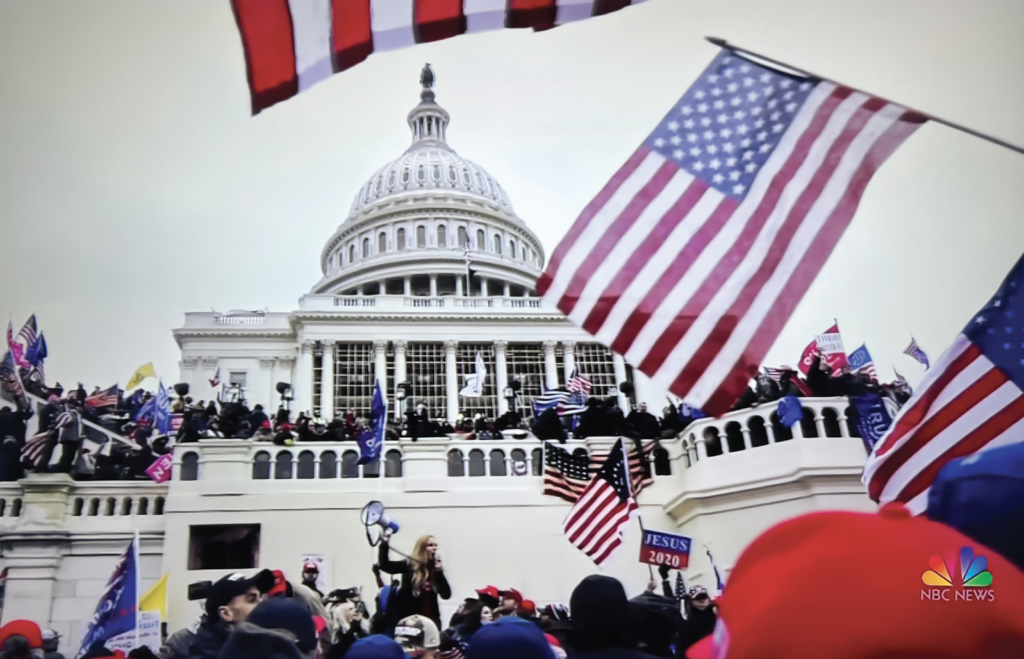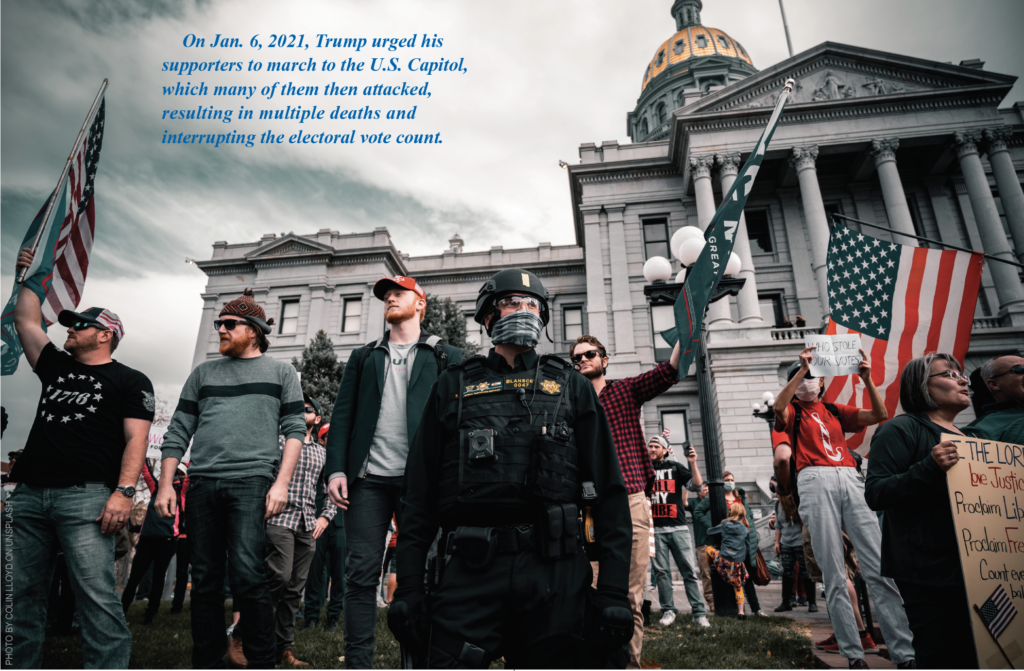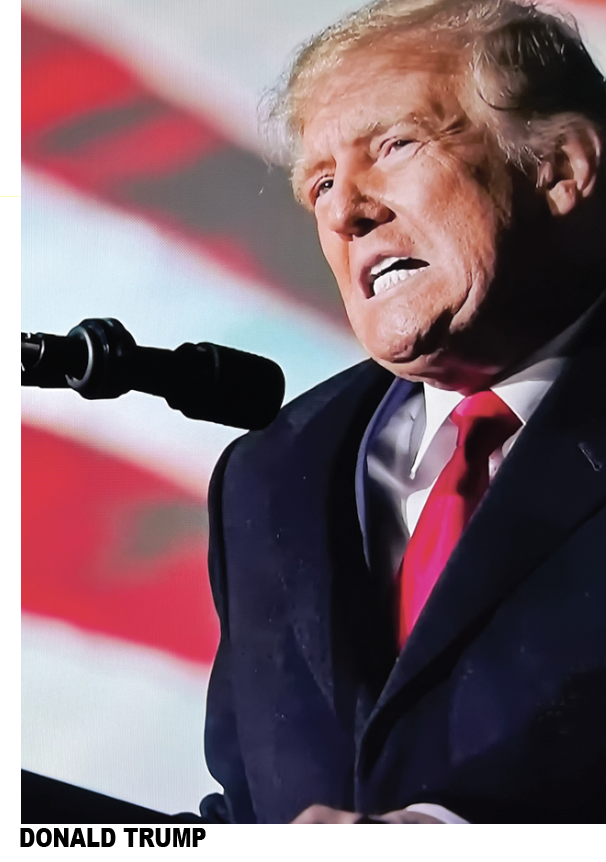The worst American president in history
By Antonio S. Lopez
In 2019, US News and World Report ranked Donald J. Trump as the second worst president of the United States, after James Buchanan, the pro-slavery chief executive.
Previously, in 2018, the Presidential Greatness Survey ranked Trump No. 1, as the worst president, with Buchanan at No. 2.
Historians condemn Buchanan, the 15th president (March 4, 1857-March 4, 1861) for not forestalling the secession of southern states or addressing the issue of slavery.
These days, after the Jan. 6, 2021 riot and facing unprecedented 78 charges, if a survey were to be conducted for the worst American president, Trump, the 45th, would be a safe bet for the top spot, bar none.
According to Wikipedia, Trump lost the 2020 presidential election to Joe Biden. He refused to concede defeat, falsely claiming widespread electoral fraud, and attempted to overturn the results by pressuring government officials, mounting scores of unsuccessful legal challenges, and obstructing the presidential transition. On Jan. 6, 2021, Trump urged his supporters to march to the U.S. Capitol, which many of them then attacked, resulting in multiple deaths and interrupting the electoral vote count.

Only president impeached twice
Trump is the only American president impeached twice. After he tried to pressure Ukraine in 2019 to investigate Biden, he was impeached in December by the House of Representatives for abuse of power and obstruction of Congress; he was acquitted by the Senate in February 2020.
The House impeached him a second time in January 2021, for incitement of insurrection, and the Senate acquitted him the next month. Scholars and historians rank Trump as one of the worst presidents in American history.
Per the Washington Post reckoning, former president Trump is facing a total of 78 charges across three criminal cases. The 78 include 44 federal charges — four in the Jan. 6 election case, and 40 in the classified documents case—and 34 state charges in falsifying business records case.

78 felony charges
All 78 charges are felonies, in three jurisdictions. Trump has denied wrongdoing in each case.
The most severe of the federal charges are the four related to obstruction—one count for conspiracy to defraud the US government, one count for conspiracy against civil rights, and two counts of corrupt obstruction of an official proceeding. The indictment was filed Aug 1, 2023 by Special Counsel Jack Smith in Federal District Court in Washington.
Conspiracy
As explained by the Washington Post, conspiracy is a broad legal term meaning two or more people plotted to break the law and then took steps to do so. A conspiracy does not have to be successful to amount to a crime.
Trump and a group of alleged co-conspirators — unnamed but many identifiable through prosecutors’ descriptions — are accused of scheming to reverse the election results and keep Trump in power.
The three conspiracy counts relate to the myriad ways they allegedly tried to accomplish that goal.
The fourth count, attempting to obstruct an official proceeding, arises from Trump’s attempt to stop Congress from certifying Joe Biden’s win.
Three criminal conspiracies
Says the Aug. 1, 2023 indictment of the Department of Justice:
The Defendant (Trump) perpetrated three criminal conspiracies: “A conspiracy to defraud the United States by using dishonesty, fraud, and deceit to impair, obstruct, and defeat the lawful federal government function by which the results of the presidential election are collected, counted, and certified by the federal government, in violation of 18 United States Code § 371;
“A conspiracy to corruptly obstruct and impede the January 6 congressional proceeding at which the collected results of the presidential election are counted and certified (“the certification proceeding”), in violation of Title 18 U.S.C. Section 1512(k); and
“A conspiracy against the right to vote and to have one’s vote counted, in violation of Title 18 U.S.C. Section 241. A conviction on this charge is punishable up to ten years in prison.
According to an analyst, in invoking the statute, the indictment frames it as “a conspiracy against the right to vote and to have one’s vote counted.”
Rig the election outcome
Essentially, Mr. Smith has accused Mr. Trump of trying to rig the outcome of the election to falsely claim victory.
The indictment says:
“Each of these conspiracies—which built on the widespread mistrust the Defendant was creating through pervasive and destabilizing lies about election fraud—targeted a bedrock function of the United States federal government: the nation’s process of collecting, counting, and certifying the results of the presidential election (“the federal government function”).”

Defrauding the US
From on or about Nov. 14, 2020, through on or about Jan. 20, 2021, in the District of Columbia and elsewhere, Trump “did knowingly combine, conspire, confederate, and agree with co-conspirators, known and unknown to the Grand Jury, to defraud the United States by using dishonesty, fraud, and deceit to impair, obstruct, and defeat the lawful federal government function by which the results of the presidential election are collected, counted, and certified by the federal government.”
Says the indictment: “The purpose of the conspiracy was to overturn the legitimate results of the 2020 presidential election by using knowingly false claims of election fraud to obstruct the federal government function by which those results are collected, counted, and certified.”
Co-Conspirators
The Defendant enlisted co-conspirators to assist him in his criminal efforts to overturn the legitimate results of the 2020 presidential election and retain power. Among these were:
Co-Conspirator 1, an attorney who was willing to spread knowingly false claims and pursue strategies that the Defendant’s 2020 re-election campaign attorneys would not.
Co-Conspirator 2, an attorney who devised and attempted to implement a strategy to leverage the Vice President’s ceremonial role overseeing the certification proceeding to obstruct the certification of the presidential election.
Co-Conspirator 3, an attorney whose unfounded claims of election fraud the Defendant privately acknowledged to others sounded “crazy.” Nonetheless, the Defendant embraced and publicly amplified Co-Conspirator 3’s disinformation.
Co-Conspirator 4, a Justice Department official who worked on civil matters and who, with the Defendant, attempted to use the Justice Department to open sham election crime investigations and influence state legislatures with knowingly false claims of election fraud.
Co-Conspirator 5, an attorney who assisted in devising and attempting to implement a plan to submit fraudulent slates of presidential electors to obstruct the certification proceeding.
Co-Conspirator 6, a political consultant who helped implement a plan to submit fraudulent slates of presidential electors to obstruct the certification proceeding.
The Defendant’s conspiracy to impair, obstruct, and defeat the federal government function through dishonesty, fraud, and deceit included the following manner and means.
Co-Conspirators named
According to the New York Times, “The indictment does not name the co-conspirators but the descriptions of them appear to match up with a number of people who were central to the investigation into election tampering conducted by prosecutors working for Mr. Smith. Among those people central to the inquiry were Rudolph W. Giuliani, a lawyer who oversaw Mr. Trump’s attempts to claim the election was marred by widespread fraud; John Eastman, a law professor who provided the legal basis to overturn the election by manipulating the count of electors to the Electoral College; Sidney Powell, a lawyer who pushed Mr. Trump to use the military to seize voting machines and rerun the election; Jeffrey Clark, a Justice Department official at the time; and Kenneth Chesebro and James Troupis, lawyers who helped flesh out the plan to use fake electors pledged to Mr. Trump in states that were won by President Biden.”
